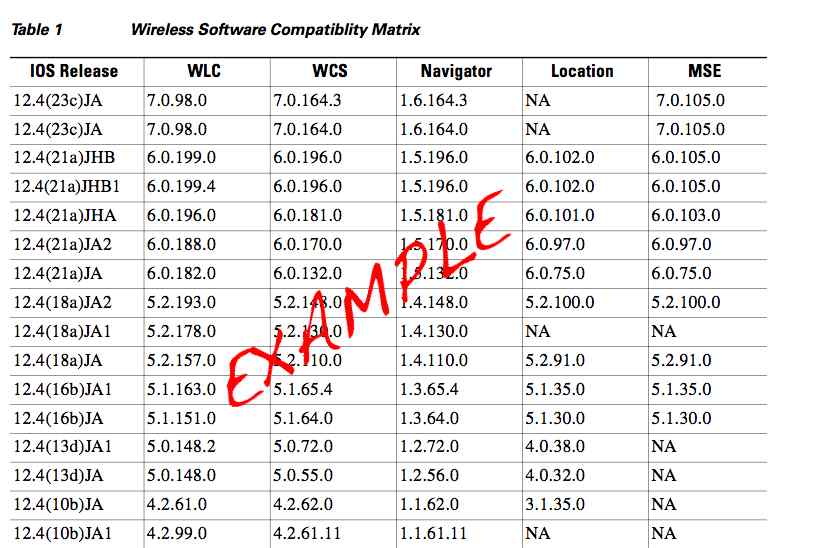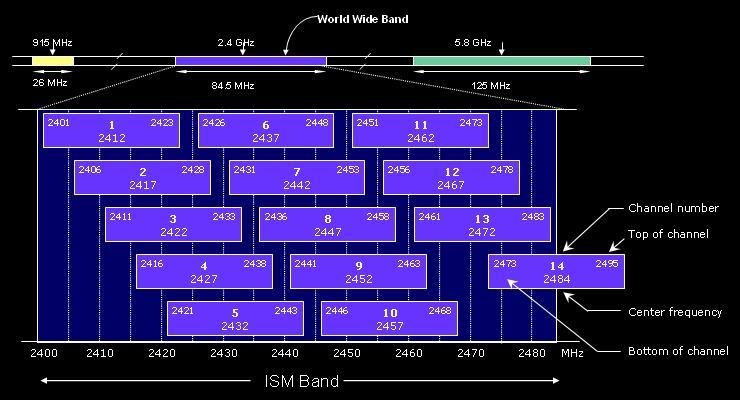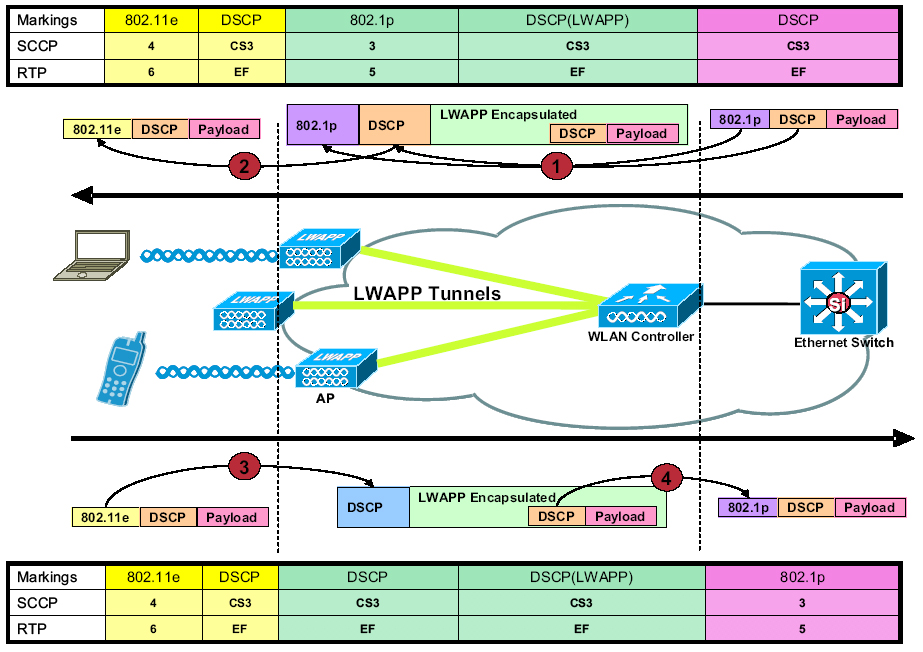WLC: Configuring Dynamic Anchoring for Clients with Static IP Addresses
 Monday, May 16, 2011 at 3:02PM
Monday, May 16, 2011 at 3:02PM If you have a WLAN that requires a large mobility area for roaming and your client needs to be static. This feature is something you should consider! This will allow you to break up these large subnets into much smaller sizeable subnets while still allowing static address on your mobile devices.
In Cisco 7.0.116.0 release a new feature "Configuring Dynamic Anchoring for Clients with Static IP Addresses" appears to have resolved my issue.
P.S. Below is a cut and paste from 7.0.116.0 config manual. Here is the link:
http://www.cisco.com/en/US/docs/wireless/controller/7.0MR1/configuration/guide/cg_mobility.html#wp1208318
Configuring Dynamic Anchoring for Clients with Static IP Addresses
At times you may want to configure static IP addresses for wireless clients. When these wireless clients move about in a network, they could try associating with other controllers. If the clients try to associate with a controller that does not support the same subnet as the static IP, the clients fail to connect to the network. You can now enable dynamic tunneling of clients with static IP addresses.
Dynamic anchoring of static IP clients with static IP addresses can be associated with other controllers where the client's subnet is supported by tunneling the traffic to another controller in the same mobility group. This feature enables you to configure your WLAN so that the network is serviced even though the clients use static IP addresses.
How Dynamic Anchoring of Static IP Clients Works
The following sequence of steps occur when a client with a static IP address tries to associate with a controller:
1. ![]() When a client associates with a controller, for example, WLC-1, it performs a mobility announcement. If a controller in the mobility group responds (for example WLC-2), the client traffic is tunneled to the controller WLC-2. As a result, the controller WLC 1 becomes the foreign controller and WLC-2 becomes the anchor controller.
When a client associates with a controller, for example, WLC-1, it performs a mobility announcement. If a controller in the mobility group responds (for example WLC-2), the client traffic is tunneled to the controller WLC-2. As a result, the controller WLC 1 becomes the foreign controller and WLC-2 becomes the anchor controller.
2. ![]() If none of the controllers respond, the client is treated as a local client and authentication is performed. The IP address for the client is updated either through an orphan packet handling or an ARP request processing. If the client's IP subnet is not supported in the controller (WLC-1), WLC-1 sends another static IP mobile announce and if a controller (for example WLC-3) which supports the clients subnet responds to that announce, the client traffic is tunneled to that controller WLC-3. As a result, the controller WLC 1 becomes the export foreign controller and WLC-2 becomes the export anchor controller.
If none of the controllers respond, the client is treated as a local client and authentication is performed. The IP address for the client is updated either through an orphan packet handling or an ARP request processing. If the client's IP subnet is not supported in the controller (WLC-1), WLC-1 sends another static IP mobile announce and if a controller (for example WLC-3) which supports the clients subnet responds to that announce, the client traffic is tunneled to that controller WLC-3. As a result, the controller WLC 1 becomes the export foreign controller and WLC-2 becomes the export anchor controller.
3. ![]() Once the acknowledgement is received, the client traffic is tunneled between the anchor and the controller (WLC-1).
Once the acknowledgement is received, the client traffic is tunneled between the anchor and the controller (WLC-1).
Note Note Note Note The following restrictions apply when configuring static IP tunneling with other features on the same WLAN: • • • Note To configure dynamic anchoring of static IP clients using the controller GUI, follow these steps: Step 1 Step 2 Step 3 Step 4 Step 5 
![]() If you configure WLAN with an interface group and any of the interfaces in the interface group supports the static IP client subnet, the client is assigned to that interface. This situation occurs in local or remote (static IP Anchor) controller.
If you configure WLAN with an interface group and any of the interfaces in the interface group supports the static IP client subnet, the client is assigned to that interface. This situation occurs in local or remote (static IP Anchor) controller.

![]() A security level 2 authentication is performed only in the local (static IP foreign) controller, which is also known as the exported foreign controller.
A security level 2 authentication is performed only in the local (static IP foreign) controller, which is also known as the exported foreign controller.

![]() Do not configure overridden interfaces when you perform AAA for static IP tunneling, this is because traffic can get blocked for the client if the overridden interface does not support the client's subnet. This can be possible in extreme cases where the overriding interface group supports the client's subnet.
Do not configure overridden interfaces when you perform AAA for static IP tunneling, this is because traffic can get blocked for the client if the overridden interface does not support the client's subnet. This can be possible in extreme cases where the overriding interface group supports the client's subnet.

![]() The local controller must be configured with the correct AAA server where this client entry is present.
The local controller must be configured with the correct AAA server where this client entry is present.
![]() Auto anchoring mobility (guest tunneling) cannot be configured for the same WLAN.
Auto anchoring mobility (guest tunneling) cannot be configured for the same WLAN.![]() Hybrid-REAP local authentication cannot be configured for the same WLAN.
Hybrid-REAP local authentication cannot be configured for the same WLAN.![]() The DHCP required option cannot be configured for the same WLAN.
The DHCP required option cannot be configured for the same WLAN.
![]() You cannot configure dynamic anchoring of static IP clients with hybrid REAP local switching.
You cannot configure dynamic anchoring of static IP clients with hybrid REAP local switching.
Using the GUI to Configure Dynamic Anchoring of Static IP Clients
![]() Choose WLANs to open the WLANs page.
Choose WLANs to open the WLANs page.![]() Click the ID number of the WLAN on which you want to enable dynamic anchoring of IP clients. The WLANs > Edit page is displayed.
Click the ID number of the WLAN on which you want to enable dynamic anchoring of IP clients. The WLANs > Edit page is displayed.![]() Choose the Advanced tab to open the WLANs > Edit (Advanced) page.
Choose the Advanced tab to open the WLANs > Edit (Advanced) page.![]() Enable dynamic anchoring of static IP clients by selecting the Static IP Tunneling check box.
Enable dynamic anchoring of static IP clients by selecting the Static IP Tunneling check box.![]() Click Apply to commit your changes.
Click Apply to commit your changes.
To configure dynamic anchoring of Static IP clients using the controller CLI, use the following commands: config wlan static-ip tunneling {enable | disable} wlan_id— Enables or disables the dynamic anchoring of static IP clients on a given WLAN. To monitor and troubleshoot your controller for clients with static IP, use the following commands: • .............. Static IP client tunneling.............. Enabled .............. • • • Auto-Anchor mobility, also known as Foreign Mapping, allows you to configure users that are on different foreign controllers to obtain IP addresses from a subnet or group of subnets. To configure a foreign mapping using the controller GUI, follow these steps: Step 1 The WLANs page appears listing the available WLANs. Step 2 The foreign mappings page appears. This page also lists the MAC addresses of the foreign controllers that are in the mobility group and interfaces/interface groups. Step 3 To configure foreign controller MAC mapping, use this command: config wlan mobility foreign-map add wlan-id foreign_ctlr_mac interface/interface_grp name To configure a foreign mappings, use this command: config wlan mobility foreign-map add wlan_id interfaceUsing the CLI to Configure Dynamic Anchoring of Static IP Clients
![]() show wlan wlan_id—Enables you to see the status of the static IP clients feature.
show wlan wlan_id—Enables you to see the status of the static IP clients feature.![]() debug client client-mac
debug client client-mac![]() debug dot11 mobile enable
debug dot11 mobile enable![]() debug mobility handoff enable
debug mobility handoff enableConfiguring Foreign Mappings
Using the GUI to Configure Foreign MAC Mapping
![]() Choose the WLANs tab.
Choose the WLANs tab.![]() Click the Blue drop down arrow for the desired WLAN and choose Foreign-Maps.
Click the Blue drop down arrow for the desired WLAN and choose Foreign-Maps.![]() Choose the desired foreign controller MAC and the interface or interface group to which it must be mapped and click on Add Mapping.
Choose the desired foreign controller MAC and the interface or interface group to which it must be mapped and click on Add Mapping.
Using the CLI to Configure Foreign Controller MAC Mapping
 George |
George |  Post a Comment |
Post a Comment | 














Reader Comments